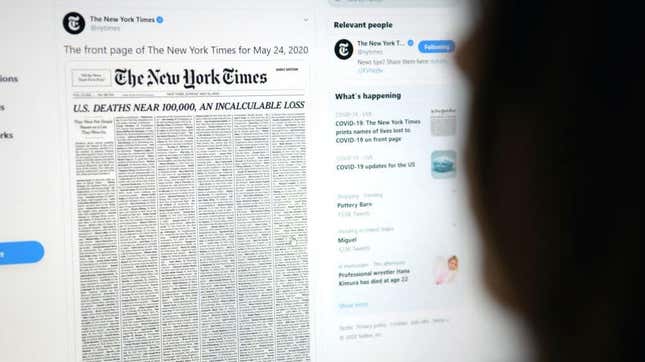Not Even The New York Times Can Escape Old-School Outrage Blogging
Latest

This past summer The New York Times op-ed section published a piece by Senator Tom Cotton, arguing for the United States government to deploy the military against Black Lives Matter protests in the wake of George Floyd’s death. The piece led to a dispute among NYT employees, with journalists tweeting about how the piece’s publication put Black journalists in danger—an internal uproar captured in a new New York Magazine piece by Reeves Wiedeman about the paper’s internal disagreements between old-school editors and a new class of journalists who see no problem with accurately labeling Donald Trump’s obvious racism as such in print.
-

-

-

-

-

-

-

-

-

-

-

-

-

-

-

-

-

-

-

-

-

-

-

-

-

-

-

-

-

-

-

-

-

-

-

-

-

-

-

-








































